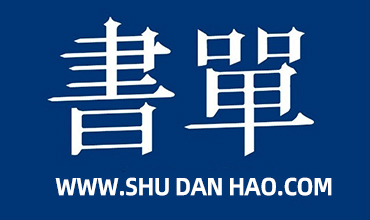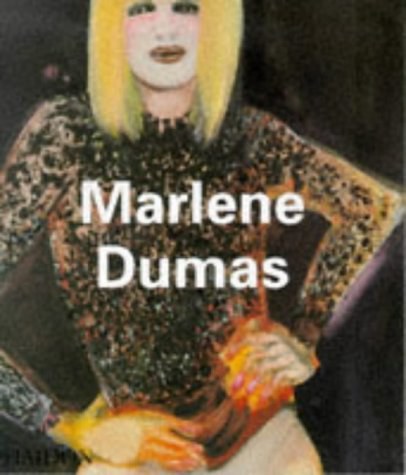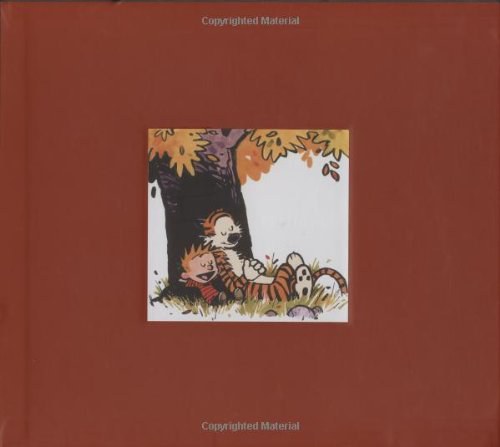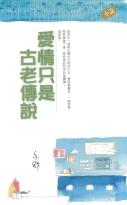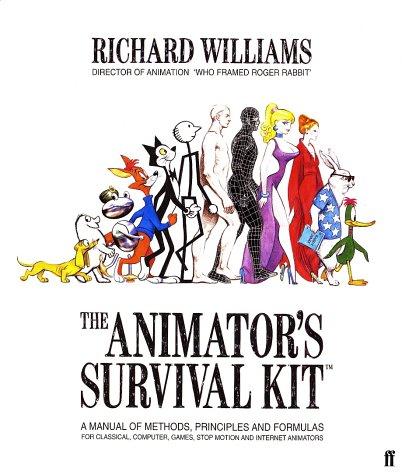
Randy Pausch《The Last Lecture》
书刊介绍
内容简介
在线阅读本书
"We cannot change the cards we are dealt, just how we play the hand."
--Randy Pausch A lot of professors give talks titled " The Last Lecture ." Professors are asked to consider their demise and to ruminate on what matters most to them. And while they speak, audiences can't help but mull the same question: What wisdom would we impart to the world if we knew it was our last chance? If we had to vanish tomorrow, what would we want as our legacy? When Randy Pausch, a computer science professor at Carnegie Mellon, was asked to give such a lecture, he didn't have to imagine it as his last, since he had recently been diagnosed with terminal cancer. But the lecture he gave--"Really Achieving Your Childhood Dreams"--wasn't about dying. It was about the importance of overcoming obstacles, of enabling the dreams of others, of seizing every moment (because "time is all you have...and you may find one day that you have less than you think"). It was a summation of everything Randy had come to believe. It was about living. In this book, Randy Pausch has combined the humor, inspiration and intelligence that made his lecture such a phenomenon and given it an indelible form. It is a book that will be shared for generations to come. Questions for Randy Pausch We were shy about barging in on Randy Pausch's valuable time to ask him a few questions about his expansion of his famous Last Lecture into the book by the same name, but he was gracious enough to take a moment to answer. (See Randy to the right with his kids, Dylan, Logan, and Chloe.) As anyone who has watched the lecture or read the book will understand, the really crucial question is the last one, and we weren't surprised to learn that the "secret" to winning giant stuffed animals on the midway, like most anything else, is sheer persistence. Amazon.com: I apologize for asking a question you must get far more often than you'd like, but how are you feeling? Pausch: The tumors are not yet large enough to affect my health, so all the problems are related to the chemotherapy. I have neuropathy (numbness in fingers and toes), and varying degrees of GI discomfort, mild nausea, and fatigue. Occasionally I have an unusually bad reaction to a chemo infusion (last week, I spiked a 103 fever), but all of this is a small price to pay for walkin' around. Amazon.com: Your lecture at Carnegie Mellon has reached millions of people, but even with the short time you apparently have, you wanted to write a book. What did you want to say in a book that you weren't able to say in the lecture? Pausch: Well, the lecture was written quickly--in under a week. And it was time-limited. I had a great six-hour lecture I could give, but I suspect it would have been less popular at that length ;-). A book allows me to cover many, many more stories from my life and the attendant lessons I hope my kids can take from them. Also, much of my lecture at Carnegie Mellon focused on the professional side of my life--my students, colleagues and career. The book is a far more personal look at my childhood dreams and all the lessons I've learned. Putting words on paper, I've found, was a better way for me to share all the yearnings I have regarding my wife, children and other loved ones. I knew I couldn't have gone into those subjects on stage without getting emotional. Amazon.com: You talk about the importance--and the possibilityand believe me, I wouldn't make much of a computer scientist. Do you think the people you've brought together will be your legacy as well? Pausch: Like any teacher, my students are my biggest professional legacy. I'd like to think that the people I've crossed paths with have learned something from me, and I know I learned a great deal from them, for which I am very grateful. Certainly, I've dedicated a lot of my teaching to helping young folks realize how they need to be able to work with other people--especially other people who are very different from themselves. Amazon.com: And last, the most important question: What's the secret for knocking down those milk bottles on the midway? Pausch: Two-part answer:
1) long arms
2) discretionary income / persistence Actually, I was never good at the milk bottles. I'm more of a ring toss and softball-in-milk-can guy, myself. More seriously, though, most people try these games once, don't win immediately, and then give up. I've won *lots* of midway stuffed animals, but I don't ever recall winning one on the very first try. Nor did I expect to. That's why I think midway games are a great metaphor for life. --This text refers to the Hardcover edition.
相关推荐
-
![[美] 山姆·班尼特《懒人总是有借口》](http://oss.shudanhao.com/caiji/chazidian/2023/19936.jpg)
[美] 山姆·班尼特《懒人总是有借口》
本书拥有一套简单的提升效率工具和时间管理法则。它将带你走出规划和执行工作中的泥沼,告别拖延症,提升行动力,让事情井井有条
-

爸爸教我好品质-走!滑雪去!
爸爸教我好品质-走!滑雪去! 本书特色 这一套适合3~6岁儿童阅读的双语绘本。3~6岁是孩子性格养成的关键期,在这一阶段,他们会面对各种成长问题和烦恼。本套图书...
-

愤怒可杀人
愤怒可杀人 本书特色 愤怒不仅是一种负面情绪,还会导致心脏病和其他致命疾病。愤怒可杀人 内容简介 本书详细介绍了心身医学领域对对敌意——愤世嫉俗、愤怒、攻击性想...
-
![[美] 洛里·斯皮尔曼《布雷特的生命清单》](http://oss.shudanhao.com/caiji/chazidian/2023/20215.jpg)
[美] 洛里·斯皮尔曼《布雷特的生命清单》
34岁的布雷特似乎拥有一切,一位身家过亿的母亲,一座宽敞阳光的独栋阁楼,一份称心如意的工作,一个不可抗拒的帅气男友。拥有亿
-

读懂你的性格选准你的职业
读懂你的性格选准你的职业 本书特色 1. 一部*实用的职场性格分析自助手册根据mbti性格分类,针对16型人格不同特点类型,打造的职业提升方法。mbti性格分析...
-

深阅读
《深阅读》内容简介:本书主要从根本上阐述“读书”的意义,更有作者力荐的创新性读书方法。透过本书的字里行间,我们细细感受作者
-

20岁做人,30岁做事
20岁做人,30岁做事 本书特色 20岁是人生事业发展的起点,如何起步,直接关系到今后的成败。这一阶段的主要任务,就是树立自己良好的形象,为未来的发展打好坚实的...
-

人生设计课
《人生设计课》内容简介:如何才能找到一份自己喜欢的甚至是热爱的工作? 如何才能过上美好的生活? 如何才能平衡好生活和工作之间
-

人这辈子.要对得起自己
人这辈子.要对得起自己 本书特色 每一个现代都市人看到这本书,都会有强烈的共鸣。因为作者和你一样,活在这个世界上,隐忍太多、付出太多、牺牲太多。很多时候,我们热...
-

黑老虎集:中国碑帖之美
《黑老虎集:中国碑帖之美》内容简介:品读中国历代碑帖,玩味古人的笔墨风神。胡竹峰品读的不仅是书法之美、文人雅趣,更有烟火日
-

珍贵的生活
《珍贵的生活》内容简介:本书收录了来自各行业多位名士的采访文章,有作家麦家、王旭烽,油画家常青,雕塑家林岗,越剧演员茅威涛
-

当下的幸福:我们并非不快乐
《当下的幸福:我们并非不快乐》内容简介:人们总爱假定幸福是有条件的,喜欢为自己的人生设定各种标准。而实际上,幸福快乐是一种
-

心灵与觉醒
《心灵与觉醒》内容简介:热情源于我们对理想和目标的追求。如果你曾经是激情四射、充满活力的,那就扪心自问,是从什么时候开始,
-

7日提升管理情商(上帝用七天创造世界.你将用七天平步青云)
7日提升管理情商(上帝用七天创造世界.你将用七天平步青云) 本书特色 上帝用七天创造世界,你将用七天平步青云!英国皇家管理学会举荐,管理服务界旗舰英国皇家管理学...
-
![心智成熟的旅程-少有人走的路-[白金升级版]](http://oss.shudanhao.com/caiji/zhongtu/2023/7681244.jpg)
心智成熟的旅程-少有人走的路-[白金升级版]
心智成熟的旅程-少有人走的路-[白金升级版] 本书特色 或许在我们这一代,没有任何一本书能像《少有人走的路》这样,给我们的心灵和精神带来如此巨大的冲击。仅在北美...
-

懂经济学的女人最幸福
懂经济学的女人最幸福 本书特色 为了让女性读者能够充分地了解经济学,本书以讲故事讲原理的形式,对我们身边的经济学现象进行解说和阐述,完全剔除经济学中枯燥的数学和...
-

曾国藩30年为政修身的黄金法则
曾国藩30年为政修身的黄金法则 本书特色 一个普通的农家子弟,并没有卓越的资质,却令人顶礼膜拜。虽然时间过去了100多年,传记、家书、日记影响一代又一代人。曾国...
-

只要我能跑,没什么不能解决
《只要我能跑,没什么不能解决》内容简介:跑步,既是传统的运动,又是当代生活方式和态度的一种新型表达。作者松浦弥太郎,日本知
-

12色彩性格
12色彩性格 内容简介 作者以九张方型的作品为出发点,创作了**套艺术心理分析图卡,经过对台湾省及中国内地不同性别、不同年龄、不同职业的数万人的实验测试,建立了...
-

马戏小子
马戏小子 本书特色 由西尔维娅·恩勒特编著、克里斯蒂安娜·汉森绘画的这本《马戏小子》是儿童小说,讲述了两个男孩和一只狮子梦幻般的友谊,他们一起冒险,拥有非凡的勇...

